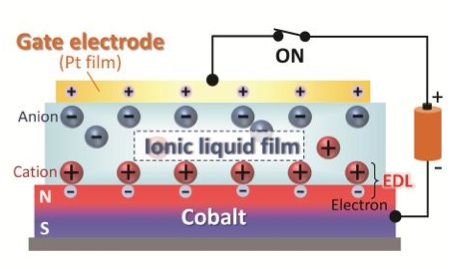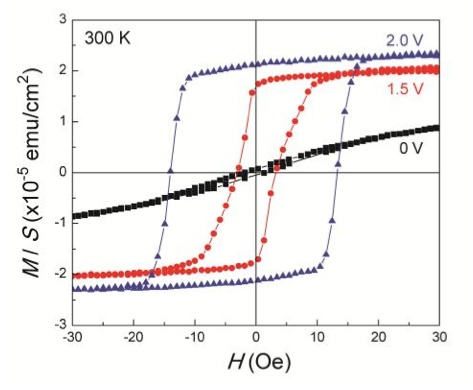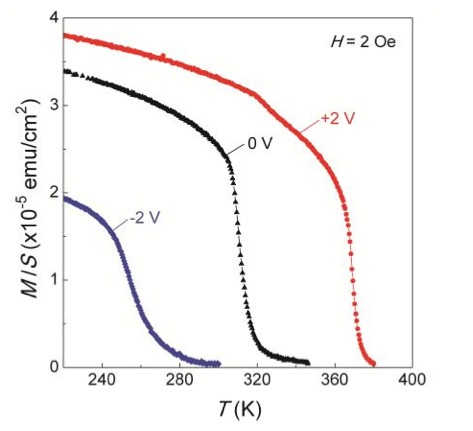Mr. Shimamura, K., Assoc Prof Chiba, D., Mr. Kawaguchi, M., Assoc Prof Kobayashi, K., Prof Ono, T. ”Significant Enhancement of Operation Temperature Range in Voltage Control of Ferromagnetism” (Published in “Applied Physics Letters” 19 February 2012)
|
Significant Enhancement of Operation Temperature Range in Voltage Control of Ferromagnetism
Published in “Applied Physics Letters“(Online Publication, March 19, 2012)
Mr. Shimamura, K., Assoc Prof Chiba, D., Mr. Kawaguchi, M., Assoc Prof Kobayashi, K., Prof Ono, T. |

Assoc Prof. Chiba, D.(Front Left) Mr. Shimamura, K.(Front Middle) |
||
| Mr. Kazutoshi Shimamura, Assoc Prof. Daichi Chiba, Mr. Masashi Kawaguchi, Assoc Prof. Kensuke Kobayashi, Prof. Teruo Ono, Shimpei Ono (Central Research Institute of Electric Power Industry), Shunsuke Fukami (NEC), and Nobuyuki Ishiwata (NEC) demonstrated that the ferromagnetic phase transition could be induced in the wide temperature range of ~100 K around room temperature by applying gate voltage to cobalt thin film. | |||
|
The electric field effect on magnetism opens up a new dimension for the research field of spintronics. Using field effect capacitors consisting of a gate electrode, an insulator layer, and a ferromagnetic layer, controls of ferromagnetic properties have been achieved through the modulation of the carrier density in the ferromagnetic layer by applying gate voltage. We have demonstrated last year that the ferromagnetic phase transition can be induced at room temperature in Co thin film by applying a gate voltage. Temperature range where the phase transition was controllable, however, was only about 10 K. Thus, the expansion of that has been one of technological opportunities to be developed. We used an electric double layer formed at the interface of an ionic liquid and the Co surface (Figure 1) to control electron density widely. As a result, we significantly enhanced the operation temperature range up to ~100 K (Figure 3) and reduced the operation voltage by 1/5 compared with our previous work. This low-voltage control of magnetism at room temperature is a significant step towards realizing future low-power magnetic applications. |
|||
 |
Figure 1. Device structure. The device consists of a gate electrode, a polimer film containing an ionic liquid, and a Co thin film. The electric double layer (EDL) can be formed by applying a gate voltage. |
||
|
Figure 2. Magnetization (M) versus external magnetic field (H) curves at 300 K under different gate voltages. The vertical axis represents M divided by the total area of the sample (S). VG was applied in an order of 0 V, 1.5 V, and 2.0 V. |
 |
||
 |
Figure 3. Temperature (T) dependence of the magnetization (M) at H = 2 Oe under VG = -2 (diamonds), 0 (circles), and +2V (triangles). |
||
| The work was partly supported by the PRESTO program from JST, Grant-in-Aid for Young Scientists (A) from MEXT, Grant-in-Aid for Scientific Research (S) from JSPS. | |||
 Institute for Chemical Research, Kyoto University
Institute for Chemical Research, Kyoto University International Joint Usage Research Center
International Joint Usage Research Center